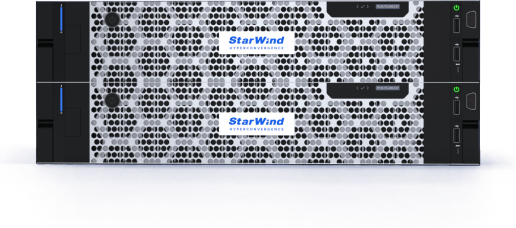Snapshots are great for quick rollbacks. Backups are your lifeline in a disaster. Don’t rely on one when you really need the other.
Keeping data safe is a top priority for any IT team. Whether it’s a hardware failure, ransomware hit, or someone just clicking the wrong button — things go wrong. That’s where snapshots and backups come in. Both help protect your data, but they work in different ways and serve different needs. Knowing how they compare helps you figure out which tool to use, when, and why.
What Is a Snapshot?
A snapshot is a point-in-time copy of a system, virtual machine (VM), or storage volume. Unlike traditional backups, snapshots do not create a separate copy of the data but instead capture the exact state of the system at a specific moment. Snapshots are widely used in virtualization platforms (such as VMware and Hyper-V), storage arrays, and file systems to enable quick rollback in case of failures.
Snapshot Use Cases
- Rapid recovery: a snapshot allows for quick restoration of a system or VM to a previous state without needing a full restore.
- Testing and development: a snapshot provides a safe way to experiment with system changes without affecting the original data.
- Patch and update management: if an update causes issues, a snapshot enables the system to revert to its pre-update state.
- Temporary data preservation: snapshots retain data temporarily before making major system modifications.
How Snapshots Work
Snapshots operate by tracking changes rather than duplicating data. When a snapshot is taken, only metadata and changed blocks are stored. Most implementations use copy-on-write (COW) or redirect-on-write (ROW) techniques to efficiently manage changes without consuming excessive storage.
When a snapshot is taken, a delta disk is created, capturing modifications while the original disk remains unchanged. This mechanism ensures efficient storage use and allows for rapid system restoration.
The initial snapshot serves as a baseline, while subsequent snapshots only store modified data blocks. This approach optimizes space but also introduces dependency on the original disk. If the base disk is lost or corrupted, the entire snapshot chain becomes unusable. Recovery involves reading the base disk and sequentially applying changes from the delta disks to restore the system to its captured state.
Types of Snapshots
Snapshots come in various forms, each tailored to specific environments and use cases. From file systems to virtualization platforms and enterprise storage solutions, snapshots offer quick recovery and rollback capabilities while minimizing storage overhead.
File System Snapshots
File system snapshots allow users to capture the state of a file system at a specific point in time. They are commonly used in operating systems like Linux with LVM snapshots and Windows with Volume Shadow Copy Service (VSS), while ZFS and Btrfs offer native snapshot functionality.
VMware Snapshots
VMware snapshots provide a way to capture the entire state of a VM, including its memory, disk, and configuration. When a snapshot is created in VMware vSphere, multiple files are generated:
- .vmdk (Virtual Disk Descriptor File): contains information about the virtual disk.
- -flat.vmdk: stores raw data of the base disk.
- .delta.vmdk: a differencing disk that records changes after the snapshot was taken, utilizing a COW mechanism.
- .vmsd (Snapshot Metadata File): stores snapshot-related information and dependencies.
- .vmsn (Memory State File): captures the active memory state, allowing a VM to resume execution exactly as it was.
Hyper-V Checkpoints
Microsoft Hyper-V employs checkpoints as an equivalent to VMware snapshots. These function similarly, capturing a VM’s state at a given time. Hyper-V checkpoints generate the following files:
- .vmcx: stores the VM configuration.
- .vmrs: contains runtime state information.
- .avhdx (Differencing Disk): tracks changes made after a checkpoint is created.
Storage-Level Snapshots
Many enterprise storage solutions, such as those from Pure Storage, NetApp, and Dell EMC, provide hardware-based snapshots at the storage array level. These snapshots operate at the block level. Storage-level snapshots are widely used in enterprise backup strategies, disaster recovery, and high-availability environments.
Pros and Cons of Snapshots
| Pros | Cons |
|---|---|
| Instant recovery: snapshots allow for rapid rollback to a previous state, minimizing downtime. | Not a replacement for backups: snapshots depend on the primary storage system and do not protect against hardware failures. |
| Minimal performance impact: when used properly, snapshots have a negligible impact on system performance. | High storage consumption: retaining snapshots for extended periods can lead to excessive storage use. |
| Ideal for testing and short-term rollbacks: great for software updates, patches, and temporary changes. | Risk of corruption and data loss: if the base disk is lost or corrupted, snapshots become unusable. |
| Automation and scheduling: snapshots can be created automatically before system changes. | Short retention period: snapshots are not designed for long-term data storage. |
What Is a Backup?
A backup is a full or partial copy of data stored separately from the original system to ensure long-term protection and recovery. Unlike snapshots, backups are independent of the source storage and are designed for disaster recovery, archival, and security against cyber threats like ransomware.
The concept of backups dates back to the early days of computing, when businesses relied on magnetic tapes to store critical data. Over time, backup technologies evolved to include disk-based solutions, cloud storage, and automated backup software with deduplication, compression, and encryption features to optimize storage and security.
Backup Use Cases
- Disaster recovery: when a system fails due to hardware malfunctions, cyberattacks, or natural disasters, backups enable full system restoration.
- Data archival: organizations store historical data for compliance, audits, and long-term record-keeping.
- Ransomware protection: backups provide a safety net against ransomware attacks by allowing data restoration from an uninfected copy.
- Business continuity: ensuring minimal downtime by restoring essential files and applications in case of an unexpected failure.
How Backups Work
Backups involve copying data to external storage (local, cloud, or tape). Many modern backup solutions use deduplication and compression to optimize storage usage and efficiency.
An effective backup strategy ensures data resilience by implementing predefined policies and recovery objectives. Organizations establish Recovery Time Objective (RTO) and Recovery Point Objective (RPO) to determine how quickly data must be restored and how much data loss is acceptable.
Types of Backups
Selecting the right backup approach is crucial for balancing data protection, storage efficiency, and recovery speed. Organizations must weigh factors such as data volume, recovery objectives, system performance, and regulatory requirements when choosing the best approach. Some businesses prioritize rapid recovery to minimize downtime, while others focus on long-term data retention and compliance.
Full Backups
A full backup creates a complete copy of all selected data, ensuring maximum protection. This method simplifies data recovery since all files exist in one backup set. Because it captures everything, a full backup is often the foundation of any backup strategy. However, it requires the most storage and can be time-consuming, making it best suited for periodic use rather than daily operations. Most organizations schedule full backups periodically (e.g., weekly or monthly) while supplementing them with incremental or differential backups to optimize storage and backup efficiency.
Incremental Backups
Incremental backups store only the data that has changed since the last backup – whether it was a full or another incremental backup. This approach significantly reduces storage space and backup time but requires multiple backup files for full restoration, which can slow down recovery. Incremental backups are commonly used in enterprise environments and cloud-based backup solutions, where efficiency and storage optimization are key.
Differential Backups
Differential backups capture all data changes since the last full backup. Unlike incremental backups, each differential backup contains all modifications since the last full backup, making restoration faster. While it requires more storage than incremental backups, it offers a middle ground between efficiency and ease of recovery. Differential backups are ideal for businesses that require frequent data recovery without the complexity of reconstructing multiple incremental backups. Many organizations use a combination of full and differential backups to ensure a reliable yet efficient backup strategy.
Pros and Cons of Backups
| Pros | Cons |
|---|---|
| Long-term data protection: ensures recovery even after hardware failures. | Time-consuming: large datasets take significant time to back up. |
| Disaster recovery and ransomware protection: backups can be stored offsite for added security. | Requires extra storage: dedicated storage solutions are needed for backups. |
| Granular file recovery: individual files or entire systems can be restored. | Potential network strain: running full backups can consume network bandwidth. |
| Flexible storage options: backups can be stored on-premises, in the cloud, or on external media. | Slower restore times compared to snapshots: full system restores may take longer than rolling back a snapshot. |
Snapshot vs. Backup: Key Differences
| Feature | Snapshot | Backup |
|---|---|---|
| Purpose | short-term rollback for quick recovery, testing, and development environments | long-term data retention and disaster recovery |
| Storage Usage | minimal for recent changes, as it only saves differences from the base disk | requires additional storage since it creates full or incremental copies of data |
| Performance Impact | low if managed properly, but excessive snapshots can degrade system performance | can be high during backup operations, especially full backups |
| Protection Scope | does not protect against hardware or storage failure | can restore data even after hardware failure, ensuring business continuity |
| Retention Period | short-term (hours to days), typically used for quick rollbacks | long-term (weeks, months, or even years) for compliance and historical data recovery |
| Recovery Speed | instant rollback, as it works within the same system | can take time depending on the backup size and storage medium |
| Storage Location | stored within the same system, making it vulnerable if the storage device fails | stored separately (offsite, cloud, tape, or external storage) for added protection |
| Data Integrity | dependent on the base disk’s integrity – corruption of the base disk can affect all snapshots | independent copy ensures data protection and integrity |
| Ransomware Protection | vulnerable if the primary system is compromised since snapshots exist in the same storage pool | more secure if stored offsite, encrypted, or set as immutable backups |
| Granularity | more granular, capturing incremental changes and allowing fast restoration | less granular since it captures full datasets but ensures complete recovery |
| Security Risks | high risk, as snapshots do not provide an isolated copy of data | low risk when using encryption, offsite storage, and immutability |
| Maintenance Complexity | low for small environments, but excessive snapshots require regular cleanup | higher complexity due to data management, storage policies, and retention strategies |
Conclusion
Snapshots and backups are complementary data protection mechanisms, not interchangeable. Snapshots provide fast, short-term rollback, ideal for quick fixes and testing. Backups, on the other hand, ensure long-term protection, crucial for disaster recovery and security. For a robust data protection strategy, organizations should use both snapshots and backups, ensuring resilience against data loss, cyber threats, and system failures.

